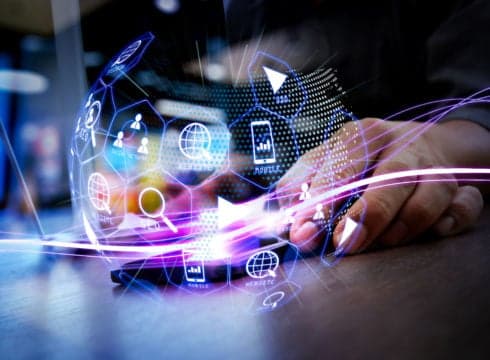Google, Facebook becoming a popular platform for advertisements across the globe
Indian digital advertising market is estimated to reach INR 24,920 Cr in 2021
FMCG, ecommerce, and consumer durables contribute heavily to the digital advertising market
Inc42 Daily Brief
Stay Ahead With Daily News & Analysis on India’s Tech & Startup Economy
The boom in internet use has made communication easy. It has also given companies a channel to reach a target audience across verticals through online advertising.
According to the Internet Trends 2019 report by “Queen of the Internet” Mary Meeker, Google and Facebook are increasingly becoming major platforms for advertising across the globe.
India’s Focus On Internet Advertisements
Information and advertisements placed on the internet have a very high power to influence user choices and beliefs. In a country like India, the problems exceed beyond boundaries because of a larger internet base, increasing internet penetration in rural regions and large population.
In its report, Meeker highlighted that Indian users form 12% of 3.8 Bn global internet consumers. Global internet users now make 51% of the world’s population and it is a considerable growth as compared to 29% of the world’s population using the internet in 2009. The Asia Pacific region was found to be leading in terms of both the number of users and potential internet users with a contribution of 53% of the total consumers.
According to Dentsu Aegis Network’s (DAN), Digital Report 2019, the Indian digital advertising market size is pegged at INR 10,819 Cr ($1.3 Bn) as of 2018 and the estimated CAGR growth will be 31.96% to reach INR 24,920 Cr ($3.52 Bn) in 2021.
While the growth looks promising, television and print continue to be the largest contributors in the Indian advertising market.
Internet Advertisements’ Power Over Business
The DAN Digital Report 2019 showed that in terms of overall contribution to the digital advertising market, FMCG has emerged to be the largest category with a contribution of 28%, followed by ecommerce accounting for 17%, consumer durables and banking, financial services and insurance (BFSI) with 12% contribution.
The advertising expenditure on digital advertising formats is led by social media (29%) followed by search (25%), display (21%) and video (20%).
“Rising disposable income is boosting the demand for quality products, and resulting in higher consumer expenditure. It has made India the world’s 5th largest global destination in retail space. What’s more? This sector is set to double in size over the next three years. There has been a rise in demand from Tier-II and Tier-III cities, enhancing the supermarket space in the country. Advertising in this space is mainly focused around the festive season, mostly in print, digital and television media,” the report noted.
As internet penetration grows in India, the ability to influence political views of the users have also increased. With the social media platform’s reaching millions of people in the country, political groups bank upon this opportunity during elections.
The influence of social media on politics was very well highlighted when social media giant Facebook was accused of spreading fake information and news to influence the voting choices during the US Presidential elections in 2016.
Recently, internet companies were also under scrutiny as India had its Lok Sabha polls 2019. Prior to the election, It was reported that Bharatiya Janata Party (BJP) and its affiliates account led the political ad spend with over 50% of the total ad spend on Facebook. Opposition party Congress and its affiliates political ad spend are at the third position after regional parties.
Meanwhile, Andhra Pradesh’s chief minister N. Chandrababu Naidu-led Telegu Desam Party (TDP) was leading in political ads spending on Google.
{{#name}}{{name}}{{/name}}{{^name}}-{{/name}}
{{#description}}{{description}}...{{/description}}{{^description}}-{{/description}}
Note: We at Inc42 take our ethics very seriously. More information about it can be found here.


